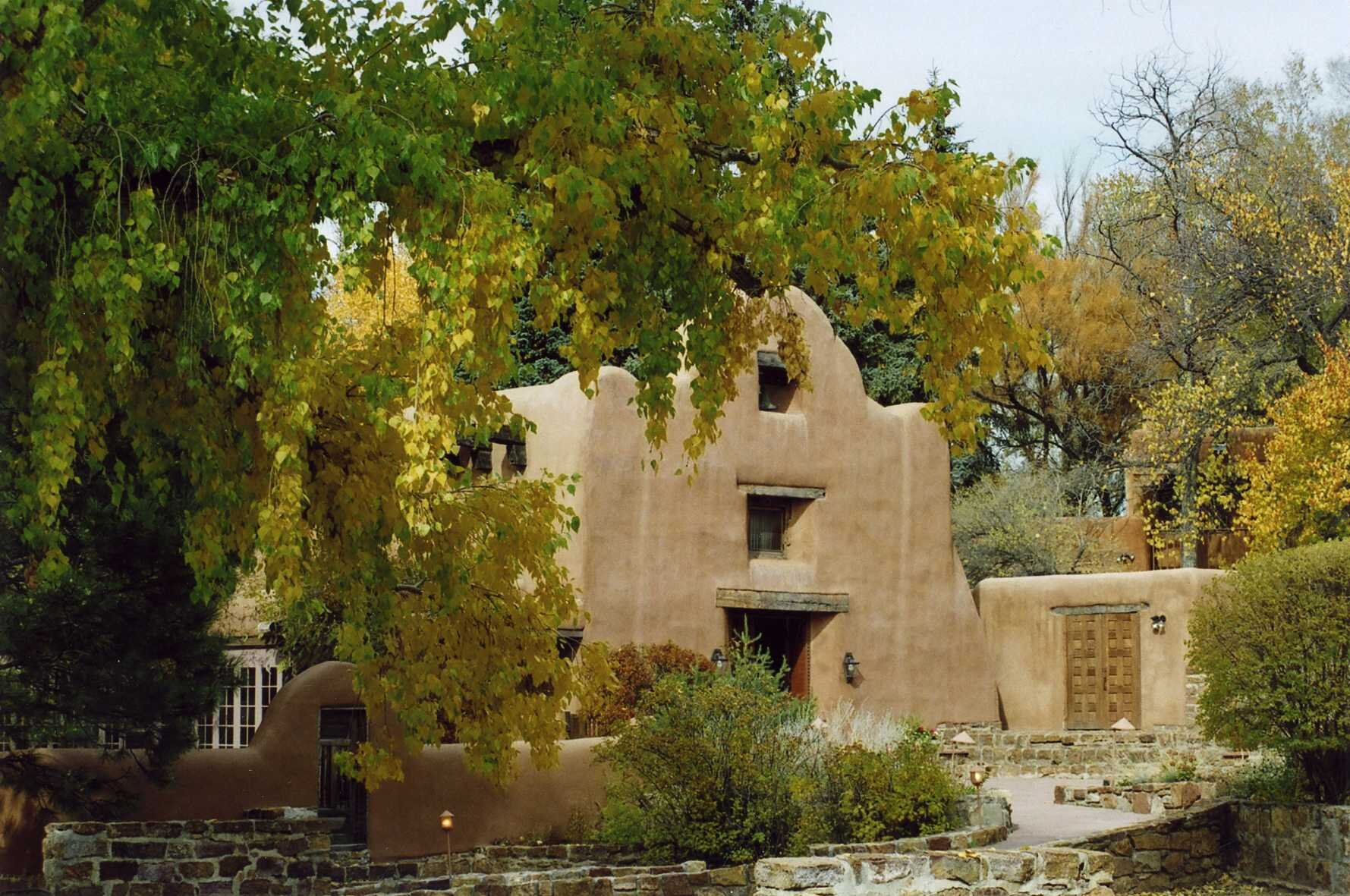SAR and the Pandemic: Life on the Screen
The White sisters’ home at El Delirio, now the administration building at the School for Advanced Research. Photo by Katrina Lasko, #3095, Courtesy of the School for Advanced Research
We present here a second in a series look at what our collaborative organizations were faced with during the COVID lockdown. The campus of the School for Advanced Research was added to our Register of Historic Properties Worthy of Preservation during the health crisis. It is designated on the Register as El Delirio, the historic name given the former estate of the White Sisters. Michael Brown, President of SAR, writes about the changes in his organization’s approach forced by the health crisis, and the time taken to make improvements to the buildings and property at the campus, during the isolation. — Pete Warzel
SAR and the Pandemic: Life on the Screen
By Michael F. Brown, President, School for Advanced Research
As many HSFF readers will know, the School for Advanced Research has steadily moved over its 114-year history from specialization in New World archaeology to a mission that encompasses public education, scholarship in anthropology and related disciplines, support for research and creativity in the Indigenous arts of the Southwest, and stewardship of our historic campus, recently recognized by the HSFF as “worthy of preservation.”
This broad palette of activities makes SAR’s elevator pitch suitable for a ride to a skyscraper’s penthouse. Yet it proved to be an asset when much of the United States went into lock-down in March 2020. Several key elements of SAR’s programs had to be suspended—most notably, our member field trips, public lectures, and tours of the Indian Arts Research Center. Happily, we were able to support our on-campus resident scholars and Native American artist fellows, although their programs were obliged to shift online. Prior to 2020, we had begun to live-stream many of our public lectures and artist talks. In the face of the state’s stay-at-home order, SAR staff members made a quick pivot to online-only events.
Lest I make this shift sound easy, remember that initially we were limited by our home equipment, as were our speakers and audience members. High-quality webcams and microphones were scarce for months. Even when we solved these technical challenges, Santa Fe’s broadband often buckled under the weight of thousands of simultaneous Zoom sessions and streamed entertainment.
To our astonishment and delight, however, our audiences began to grow, reaching all fifty states and nineteen countries to date. Since March 2020, over three thousand individuals previously unknown to us have participated in more than sixty events, along with hundreds of longtime SAR members. In short, the pandemic forced us to interrupt the face-to-face relationship with our local members in favor of online communication with a broader and more diverse global audience.
We also took advantage of our public closing to complete long-overdue campus improvements: roof and masonry repairs, new handrails on our walkways, and fresh plaster on nearly every building and wall.
What’s next? We’re easing back into our offices and planning for a full public opening by late summer. The main challenge going forward will be to maintain our ongoing commitment to local members, whom we sorely miss, without losing a new national and international audience interested in SAR’s lectures and classes. One way or another—on-screen or in-person at our Garcia Street campus—we invite you to join us in the emerging post-pandemic world.

